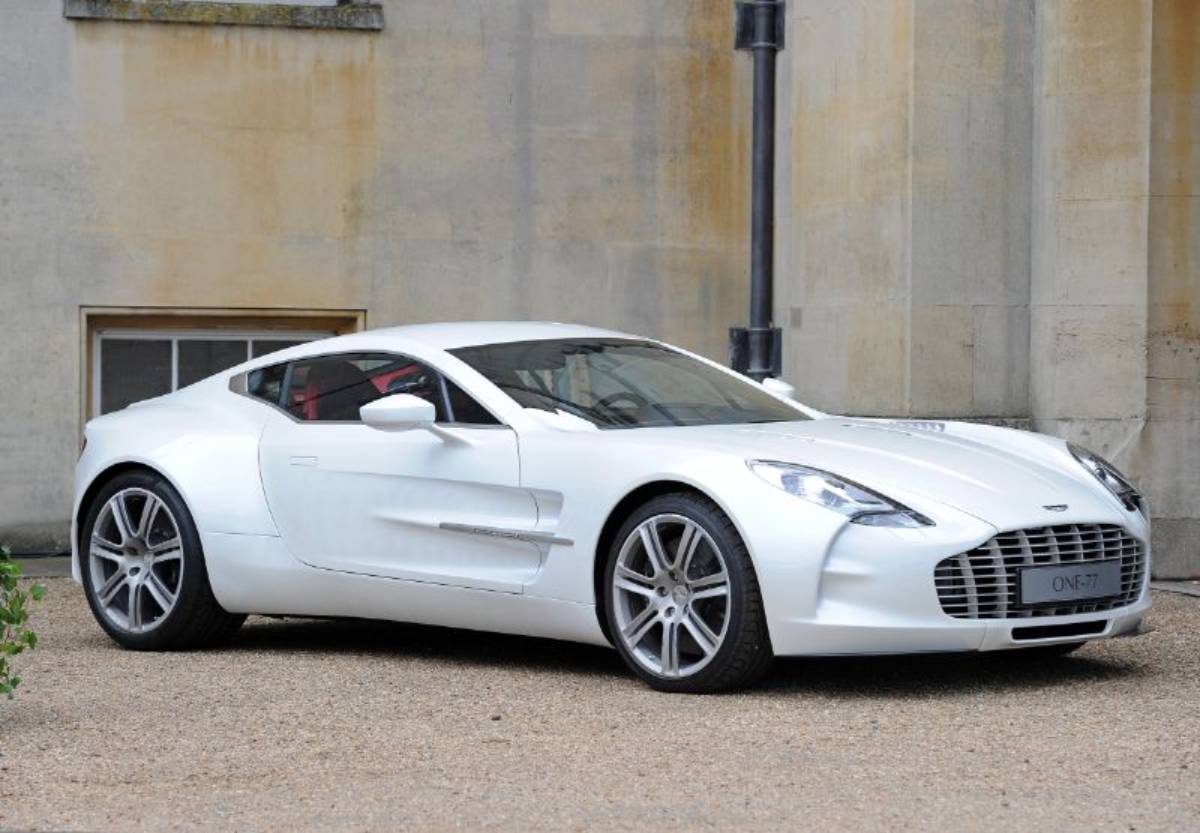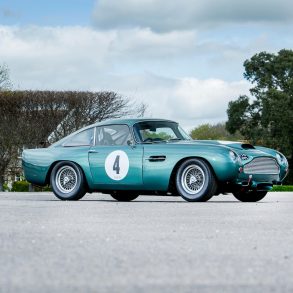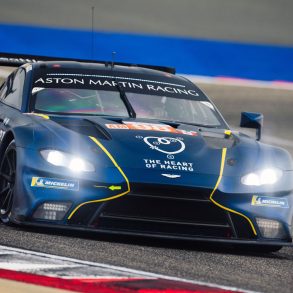What makes a true hypercar? Is it a dramatic body? Is it the majestic noise of a V12 or performance that goes hand in hand? Or is it keeping it true to tradition, refusing to conform to the slightest possibility of a compromise, and overcoming all hardships, only to win in style? We’ll let Aston Martin One-77 answer that question.
Decades after the rise of the supercars and the birth of hypercars, Aston Martin still refused to succumb to the mid-engined standard and presented a GT car so rare and outstanding it easily qualified as a hypercar. Just like a shaken, not stirred vodka martini, Aston Martin One-77 is the perfect blend of tradition and technology coming together to create a simple, yet still unrivaled taste.
Background
From its inception until very recently when it announced the Valhalla, Aston Martin stayed true to the basic GT car layout. Apart from several highly experimental 4-doors built under the Lagonda brand, the company followed the formula of a 2-door sports car with the engine in the front.
During the times when they were an independent company, its sports cars of the yesteryear were powered by inline-four, inline-six, and V8 engines. The iconic DB5 sported a massive 4.0-liter straight-six and so did the DB6 and the DBS, another emblematic ride from the 007 universes. A change to V-shape engines came with the 1969 DBS V8, becoming a standard for the company.

By the early 1990s, luxurious GT coupés were all about twelve cylinders. Jaguar and Ferrari have had them decades before, but Mercedes-Benz and BMW joined into this exclusive club with the C140 CL and the E31 8 Series. In spite of producing superb sports cars, Aston Martin started losing ground to the competition again.
Under Ford’s ownership, V12 power was introduced, first in the 1999 DB7 V12 Vantage, later followed by the Bond-worthy Vanquish. A new era for the distinguished marque started in 2003 with the opening of a new purpose-built factory in Gaydon. The factory enabled them to resume assembling their own engines, taking over from Cosworth which still casts the engine blocks and the heads.

The V12 became a staple for the company with the introduction of the DB9, also appearing in the DBS and the V12 Vantage. In 2007, the company went through another ownership change and was led by a consortium consisting of David Richards of Prodrive, Adeem Investment and Investment Dar from Kuwait, and an American investment banker John Singers, with Dr. Ulrich Bez as the CEO.
Development of the Aston Martin One-77
To mark the centennial anniversary of the brand and the new chapter as a private company, they intended to revive the Lagonda brand, but also to introduce an ultimate expression of its hallmark – the V12-powered GT coupé. This project was planned to reintroduce Aston Martin to devotees looking for an engaging experience in a highly restricted package.
They couldn’t have chosen worse timing for developing and marketing its ultimate car. In 2008, the world was hit by the hardest recession since the Great Depression, and all of a sudden, presenting a million-pound ultra-exclusive car didn’t seem like the most viable move.
Still, they were adamant to carry on with the celebration, gradually offering glimpses of their newest work of art at the three most prestigious car shows in Europe. The first act was at the 2008 Paris Motor Show, where a veiled full-scale model was shown, revealing only the front right side of the car.

For the second-act reveal, they went to the 2009 Geneva Motor Show, displaying a rolling chassis and an uncovered mock-up. A month later, in April 2009, the One-77 functional prototype got the Award for Concept Cars and Prototypes at the Concorso d’Eleganza Villa d’Este, a fitting third act crescendo for the company’s brightest star.

Offered at 1 million pounds each, the One-77 aimed at the highest automotive echelon, and in spite of a crumbling economy, they sold off the whole run during the 2009-2012 production span.
So, what exactly drew seventy-seven people towards this vehicle? We’re here to explain by covering each and every aspect of this noble car and the traits that made it unparagoned.
Construction
The naked internals of the Aston Martin One-77 displayed at the 2009 Geneva Motor Show offered a detailed display of advanced methods used in constructing the upcoming flagship car.
In creating the rigid chassis that could handle the power of the bespoke V12 engine, they collaborated with Multimatic, an independent company possessing world-leading expertise on carbon composites.
The partnership brought in a cleverly designed aluminum honeycomb monocoque wrapped in carbon fiber. The engine compartment utilized hollow aluminum beams doubling as air intakes, reducing the number of parts, further helping with keeping the weight down.

The engine was placed behind the front axle, meaning that the One-77 was a front mid-engined car, just like the SLR McLaren. This layout offered optimal weight distribution whilst keeping the proportions of a grand tourer.
The aimed weight for the One-77 was under 3,300 lb, but in the end, the car weighed 3,594 lb.
Body
The car’s designer, Marek Reichman, wanted to reinterpret key elements of an Aston Martin, both traditional and contemporary, and blend them into a theatrical grand tourer. The One-77’s demeanor leaves little to question.

Sitting at 48.1 inches, the One-77 is noticeably lower than the DB9 and at 181 inches in total length, it is shorter too. The expression of its true nature comes from 86 inches of width and an expressive, almost violent body.
Lehti gave the One-77 a complex character balancing the doses of unalloyed power, aristocratic tradition and touches of delicacy. The recognizable shape of the front grille was an ode to the glorious past, yet it’s accentuated by gaping air inlets sending fresh air to cool the brakes sitting inside the outlandishly curvaceous front fenders.

Stepping to the side, one could finally witness the true scale of the One-77 drama. The iconic side vent that graced the front fenders since the DB4 now stretched across two panels, forming a deep cut in the doors. The oversized design element formed a cohesive bond with the air inlets, also serving a functional purpose in creating the One-77’s aerodynamics.

The short rear end typical for grand tourers also featured pronounced fenders and the looks were finished off thanks to recognizable one-piece tail lights and a prominent rear diffuser. Bits of sheer tenderness balanced the aggressive nature of the body, so the lightweight aluminum doors opened just slightly upwards, a feature called swan doors.

From a functional standpoint, the aim was to make the One-77 into an aerodynamically neutral car. If the body generated massive downforce, that would require stiffer suspension and bigger wheels, ultimately compromising ride quality in regular driving conditions. Despite creating its most potent car to date, they wanted to keep its image of a tailor-made gentleman express.
The sole manufacturing process was as extraordinary as the car itself. Each aluminum panel was shaped by skilled artisans, rolling and hammering each panel until they’ve reached perfection. Building such a modern-looking body using traditional tooling was something only Aston Martin could achieve, making the One-77 a true handcrafted masterpiece.

Engine
The relatively short history of Aston Martin V12 has deep connections with Cosworth, a famed engineering company Ford enlisted to construct the flagship powerplant. The 5.9-liter V12 relied on the 3.0-liter Duratec V6 and it was in Cosworth’s production until they moved into their Gaydon plant where it started assembling the engine.
A distinguished car it was, the Aston Martin One-77 called for a bespoke engine. The company turned to Cosworth to re-engineer the 5.9-liter unit into a powerhouse worthy of the upcoming masterpiece.

As a result of this thorough revamp, the engine significantly grew in displacement, to 7.3 liters. Simultaneously, Cosworth shed all excess weight, bringing it down 15% compared to the base 5.9-liter unit. To achieve this, Cosworth engineered new unique cylinder heads, pistons, rods ,crankshaft and camshafts and the intake system. The only part that didn’t go through some sort of re-engineering was the timing chain.
The use of lightweight parts brought the overall weight of the engine down by 132 lb and by installing the dry sump, Cosworth enabled the engine to sit lower in the chassis, helping improve cornering performance thanks to a lower center of gravity.
The compression went up to 10.9:1 and the final power output was 750 horsepower and 553lb-ft of torque. Upon introduction of the One-77, this V12 was the most powerful naturally aspirated engine in the world. Its top speed of 220 MPH and a 0-60 sprint of 3.7 seconds, places the Aston Martin One-77 on par with Ferrari Enzo, Pagani Zonda, and other high profile hypercars of its era.
Gearbox
Ensuring optimal weight distribution between the axles and speedy gear shifts, the gearbox is a six-speed automated manual transaxle with a lightweight carbon fiber driveshaft passing through a magnesium alloy torque tube.
The semi-racing clutch was said to be difficult to handle at lower speeds, but its performance excelled during engaged driving.
Suspension, Wheels and Tires
Ensuring maximum grip was fully independent suspension built on race car principles. With the construction principles mirroring race cars, Multimatic engineered the front springs and dampers horizontally in a pushrod layout, reducing unsprung mass and improving the resistance of the front wheels to vertical motion.

The rear suspension consisted of four coils, two of them being part of a hydraulic anti-roll bar. Moreover, there was a mechanical steel torsion bar as well.
Then there’s Aston Martin’s trademark devotion to style even in such an extreme car as the One-77. The exposed anti-roll bars linger over the leather-wrapped trunk which also features windows offering a glimpse of horizontally mounted rear shock springs. The suspension is fully adjustable inboard, so the owners could set up the car to fit their unique needs.
The One-77 sat on lightweight 20-inch wheels with 255/35 ZR20 front and 335/30 ZR20 rear Pirelli P Zero Corsa high performance tires and stopping power is provided wia six-piston calipers squeezing the carbon ceramic brake rotors.
Interior
The cockpit of the One-77 undeniably carried their modern DNA, starting from flowing organic lines, top-shelf traditional materials all the way to the subtle details. Exposed carbon fiber weave seamlessly blended with acres of exquisite leather to create a cocoon for the driver and the co-driver separated by an aluminum-and-carbon central console featuring push-button gear selector and a crystal start button.

Per customers’ requests, various shades and finishes could be applied to the interior. The recurring theme however was extensively used clear-coated carbon fiber, two-tone leather, and moody anodized aluminum.

Behind the steering wheel and the gear selection pedals, a leather-wrapped instrument cluster houses a set of simple analog dials. Clean and simple, the reversed rev counter is marked up to 8 and it’s stripped of its redline indicator. The speedometer, however, reads 220 MPH, not a single mile more than its actual top speed.
Presentation
The exclusivity of the One-77 didn’t rely merely on limited production numbers. CEO Ulrich Bez wanted to offer something truly special for its prospective owners. The whole process of ordering, configuring, waiting, and finally receiving each example of the One-77 was an experience that went beyond regular VIP treatment one would expect from a manufacturer of this caliber.

During the production run, no press tests of the One-77 were ever conducted. Bez didn’t want the media to interfere in any way, at least not until the 77th car was sold. Every subsequent test of the Aston Martin One-77 depended entirely on good will of their respective owners. When the automotive press finally got to the One-77, they’ve unanimously placed it at the very top in the hypercar world.
One-77 Q-Series
With seventy cars produced and sold, Aston Martin introduced the final run of seven very special examples of the One-77. The so-called Q-Series added special touches and more intricate interiors, most notably the red-on-black setup with Alcantara wrap on the 9 o’clock and 3 o’clock positions on the steering wheel.


The Q-Series name came from ‘Q by Aston Martin’, an exclusive personalization program and it was limited to visuals only, with no changes.
Aston Martin Victor
Honoring the late Victor Gauntlett, a British businessman who resurrected Aston Martin in the 1980s, the Q division of the company presented a one-off car based on the One-77 and the Vulcan, two flagship cars of modern Aston Martin.

The Victor’s V12 boasts naturally aspirated 836 horsepower and 606 lb-ft of torque mated to six-speed manual transmission and all wrapped in a nostalgic dark green body reminiscent of the original V8 Vantage, the car Gauntlett launched. The high-tech interior is finished in green leather, exposed carbon fiber and wood, blending tradition with the present.
This one-off car borrowed the chassis and the engine from the One-77 as a testimony of how relevant it still is even ten years after its initial launch.
With the Valhalla embracing a mid-engined layout and downsized engine aided by a pair of turbochargers, the One-77 will be remembered as the purest Aston Martin hypercar.
The Aston Martin One-77 embodies each core element of the company’s identity: performance, luxury, tradition and innovation. Undiluted and brought to the very maximum, these elements came together in a car that put Aston Martin where it always belonged.










